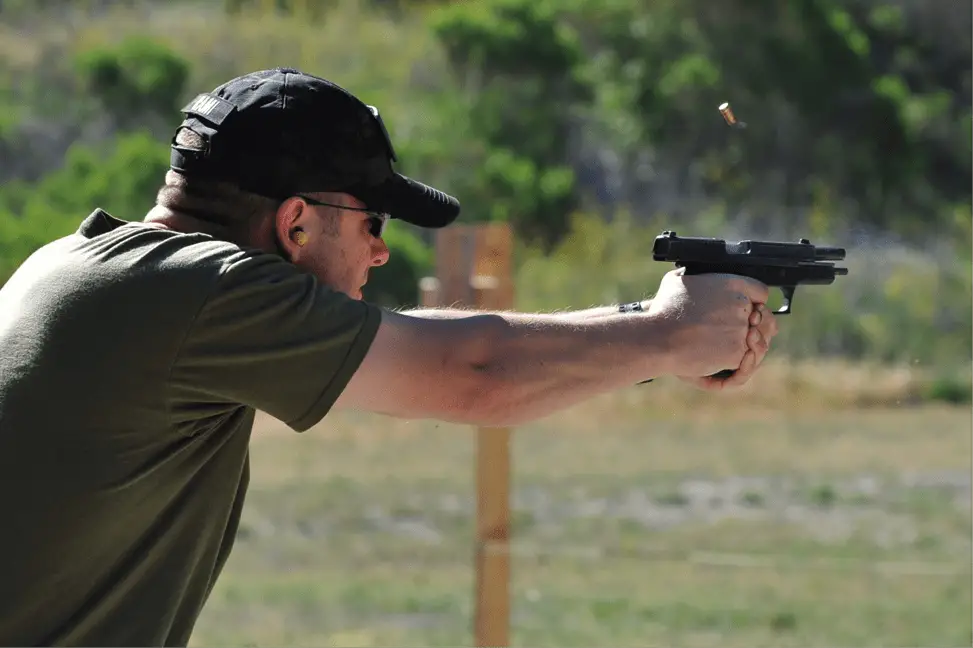
The optics industry is working hard at creating well-performing products that will help both beginners and advanced shooters in improving their accuracy. However, the best scopes will dig a pretty big hole in your pocket, and with the cheap ones, it’s difficult to find a diamond in the rough.
With this in mind, I decided to work on my accuracy and try to find those minor adjustments that will make my guns better. I am both a passionate airsoft player and a gun owner, so it’s important that I learn how to control my accuracy in both cases.
My goal is to avoid spending too much money on expensive equipment and find those little tweaks that are usually ignored. Below you can see the methods I tried and I hope they will be of help for other fellow shooters.
Improve accuracy when shooting a Handgun
Honestly, I consider the handgun one of the most difficult to master when it comes to accuracy. The short sight radius, looking for the right trigger pressure, and getting the correct stance can be tricky to pull together from the first try.
The Grip
If you’ve ever shot with a pistol, you know how important it is to get a good grip. The gun must fit perfectly in your hands so, if you find your gun stock is slippery or too small, you should think about a back strap.
This is a cheap accessory (around $10) and is easy to find in any gun store or online. The back strap will slightly modify the shape of your stock to fit perfectly in your hand. For instance, if you have big hands, you’ll need a back strap that makes the stock bigger. On the other hand, if you need a more curvy shape for your stock, you should get the according back strap.
On my Glock Gen 4, I got the back straps when I got the gun, but this is not the case for every pistol. I recently started using the large back strap (big hands) and I can feel the difference in grip.
Trigger control
This is another aspect that’s difficult to control, even for advanced shooters. Finger placement on the trigger is highly important for your accuracy – too much or too little and the gun will wobble messing with your aim.
It took a few test shots to see where exactly my ideal finger placement is, but this is different for everyone. So, I recommend testing how your finger placement affects your accuracy (it’s free and it will be of great help in the long run). Here, you can find the in-depth description of finger placement techniques that was very helpful for me.
Use the Sights
Every gun comes with rear and front sights which are amazing when it comes to accuracy. If you use them correctly, your aim will improve considerably and fast!
I talked to Tom from googgun and here are a few expert tips I learned:
- Don’t focus on the rear sights, focus on the front one (it must be between the two rear sights)
- The front sight and the rear sight must be leveled – if the front sight is slightly up above, you will shoot high, if it’s down below, you’ll shoot low.
- Align the front sight with the center of your target (once you checked the steps above)
If you follow these steps and you have the correct trigger pull, your shot should hit the middle of the target.
According to Tom, the sight alignment is one of the most common mistakes when it comes to accuracy so make sure to work on that. The good news is that it is free – once you master sight control, your accuracy will improve without spending one month’s salary on accessories.
Dry Fire
If you’re a beginner trying to better your accuracy, you can try dry fire to practice anywhere. Of course, practicing with live ammunition is better but ammunition is not always available and you can’t shoot a gun in any location.
So, to improve your accuracy and test your stance, practice your shooting skills without ammunition. Still, keep in mind that an empty gun won’t have recoil when you fire it. Dry fire is a great way to get a better feel of the gun without distractions, and you have the possibility to learn how to balance the gun and use the sights the right way.
I recommend getting a laser sight so you’ll know when your accuracy is just right. The laser gives you feedback and it’s easier to learn the right hands’ alignment.
Drills to Improve Accuracy
Once you’ve worked on all the things I mentioned above, it’s time to test your skills in various situations. Since you’re not always shooting at a fixed target, here are some drills that will help you assess your accuracy:
The Ragged Hole
From 6 yards, fire five rounds aiming at a single point on your target (you choose the point). Take your time while shooting and make sure you use the exact same point for each shot. If your accuracy is good, you’ll end up with a single, ragged hole on your target. Otherwise, the shots will be spread out, and you’ll know you need more practice.
Shrinking the target
For this, you’ll need a target with four circles on it, each smaller than the previous one. The goal is to fire five rounds into each circle, from 6 yards. As you master all the circles, your skills will improve.

